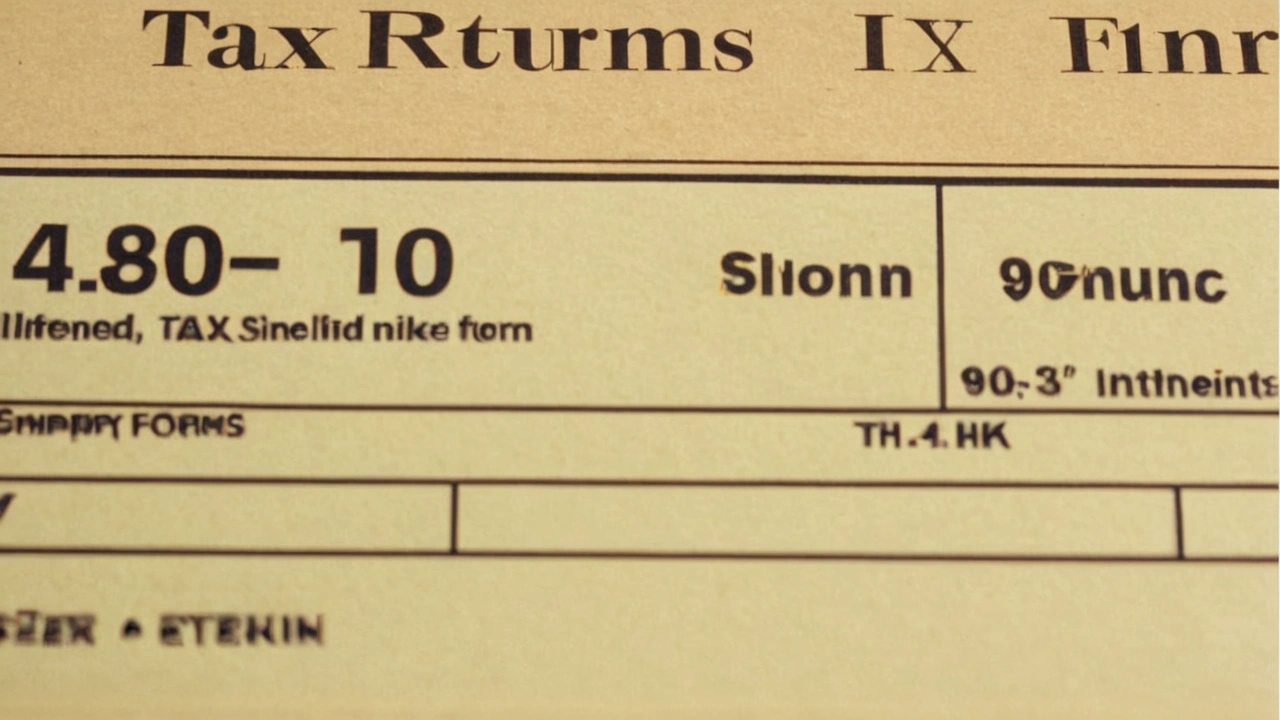Demystifying the 1098 Form: Your Tax Return Essential

As the tax year comes to an end, you will see many IRS forms that are important for filing your tax return correctly. One form to pay attention to is the 1098 form. It is often ignored but is very helpful for homeowners and students when managing their tax duties. In this guide, we will make the 1098 form easy to understand. This way, you can face tax season with confidence.
Understanding the 1098 Form: An Overview
Form 1098 is a tax form used by the IRS. It helps you report different expenses you may have during the year. This includes mortgage interest, student loan interest, and education-related payments. It serves as a record for you and the IRS. This makes sure that reporting is correct and can help you get tax benefits.
If you own a home and paid mortgage insurance premiums, or if you are a student who made student loan payments, it's important to understand the 1098 form. Knowing how it applies to you is key to getting the most deductions and credits when you file your tax return.
The Purpose of Form 1098 in Tax Filing
The main purpose of Form 1098 is to report the mortgage lender interest payments you made during the tax year. This information can help lower your taxable income, which may reduce your total tax bill.
When you pay mortgage interest, you can often deduct some of those payments on your federal tax return from rental income. Form 1098 gives you and the IRS a clear breakdown of these payments, so you can claim the deduction if you are eligible.
Keep in mind that this deduction usually applies if you itemize your deductions on Schedule A of your tax return. If you take the standard deduction, you cannot use it. This form helps ensure everything is reported correctly, allowing taxpayers to make smart choices about their deductions.
Different Types of 1098 Forms and Their Uses
Form 1098 usually refers to the mortgage interest statement. However, there are different types of this form for various financial situations. Knowing these differences is important for filing your taxes correctly.
Besides the mortgage interest statement, you may also see:
- Form 1098-E: This form shows how much student loan interest you paid during the year. You might be able to deduct part of this interest on your tax return.
- Form 1098-T: Colleges and universities provide this form to show tuition payments and related expenses. This could help you get education tax credits, like the American Opportunity Tax Credit.
Each type of 1098 form has a specific purpose. They help you calculate deductions or credits for certain expenses. Understanding which form fits your situation can make tax season easier.
Navigating Through 1098 Forms: A Closer Look
Now that we understand the 1098 form and its types, let’s explore each one more closely. We will look at the main parts and explain the benefits of each form. Keep in mind that this guide tries to cover everything. However, talking to a tax expert can give you advice that fits your unique financial needs.
Form 1098: Mortgage Interest Statement Explained
As a homeowner, Form 1098 is important for knowing about your mortgage interest deduction. It shows how much interest you paid to your lender during the tax year.
By looking at Box 1, you can see the total mortgage interest you paid. This helps you figure out how much you can deduct when you file your tax return. This deduction can lower your taxable income, giving you some tax savings.
Remember, there are certain rules, like loan limits and your filing status, that affect your eligibility for this deduction. Take the time to read the guidelines, or talk to a tax professional. This will help make sure you follow all the rules.
Form 1098-E: Student Loan Interest Deduction
Managing student loans is a big financial duty. Form 1098-E can help during tax season. If you made student loan payments, your lender gives you this form that shows the amount of student loan interest you paid.
Like mortgage interest deduction, you can deduct some of the interest paid on your student loans shown on Form 1098-E. You don’t have to itemize other deductions on your tax return to use this deduction. This may give you some savings.
Still, there are income limits and other factors that may affect your ability to get the student loan interest deduction. It’s best to check the IRS guidelines or talk to a tax professional. They can help you figure out if you qualify and how to claim this important deduction.
Form 1098-T: Tuition Statement for Education Expenses
Form 1098-T is very helpful for students in higher education or those paying for their education. Schools issue this form. It shows the qualified tuition costs and other fees paid during the tax year.
The details on Form 1098-T help you understand if you qualify for education tax credits. These include the American Opportunity Tax Credit and the Lifetime Learning Credit. These credits can lower how much tax you owe.
It is important to understand the details of education tax credits, like income limits and expenses that qualify. You should check the IRS guidelines or get tax advice from an expert. This will help you claim the right credit and make the most of your tax benefits.
How to Utilize Your 1098 Form for Tax Deductions
Now that you know about the different 1098 forms, let's look at how to make the most of them during tax season. Whether you are claiming a deduction for mortgage interest, student loan interest, or trying to get a tax credit for education, these forms are important for getting tax benefits.
When you file your tax return, make sure to fill in the information from your 1098 form in the right places. Check that all numbers are correct and compare them with your records. If you have any doubts during this process, it’s a good idea to ask a tax professional for help. They can make sure your filing is right and help you get all the benefits you qualify for.
Claiming Mortgage Interest Deductions with Form 1098
If you qualify for the mortgage interest deduction, Form 1098 is important. This form shows the total amount of interest you paid on your mortgage for the year in Box 1.
Make sure to add this amount to your tax return when listing your deductions. Doing this correctly will help lower your taxable income.
Remember, different factors can affect how much you can deduct, like loan limits and your filing status. Always check the latest IRS rules or talk to a tax expert to understand your eligibility and deduction limits.
Maximizing Education Credits with Form 1098-T
Successfully getting education tax credits needs careful thought and the right information. Form 1098-T is very important. It helps you know if you can get credits like the American Opportunity Tax Credit or the Lifetime Learning Credit.
When you do your tax return, use the details from Form 1098-T. Put this information in the right places related to education costs. This will help you claim the right credit and make the most of your tax benefits.
It is important to know the specific rules for each credit. Things like your enrollment status, income limits, and qualified expenses matter. Look closely at the IRS guidelines or talk to a tax expert to understand your eligibility and how much credit you can claim.
Conclusion
Understanding the 1098 Form is very important for getting the most out of your tax deductions. This form helps you claim deductions for things like mortgage interest and education credits. There are different types of 1098 forms for different areas, such as mortgage interest, student loans, and education costs. If you know how to use these forms, you can save a lot of money on taxes. Use your 1098 Form carefully to make sure you get all the deductions and credits you qualify for. Also, keep track of the deadline for getting your 1098 Form to make your tax filing smoother.
Let us handle your taxes while you focus on what matters most. Reach out to us now!

